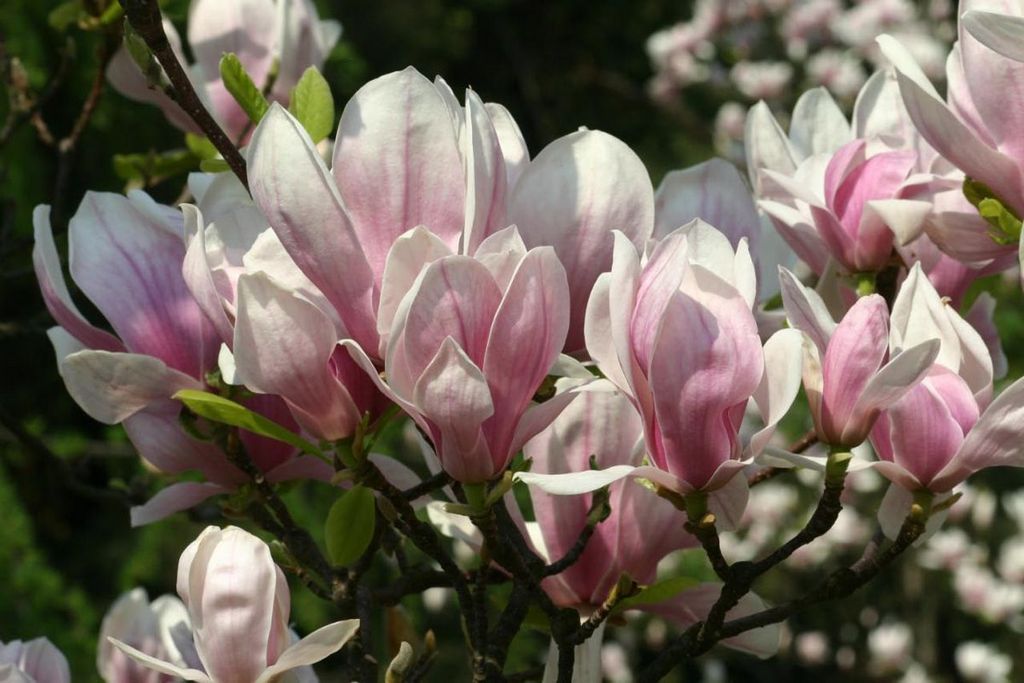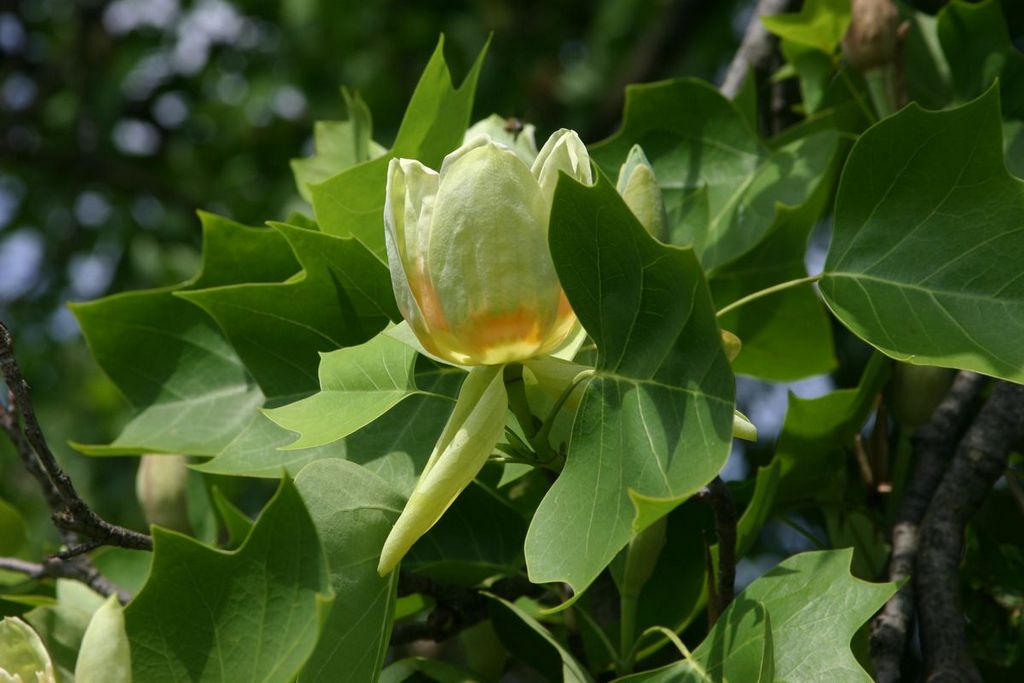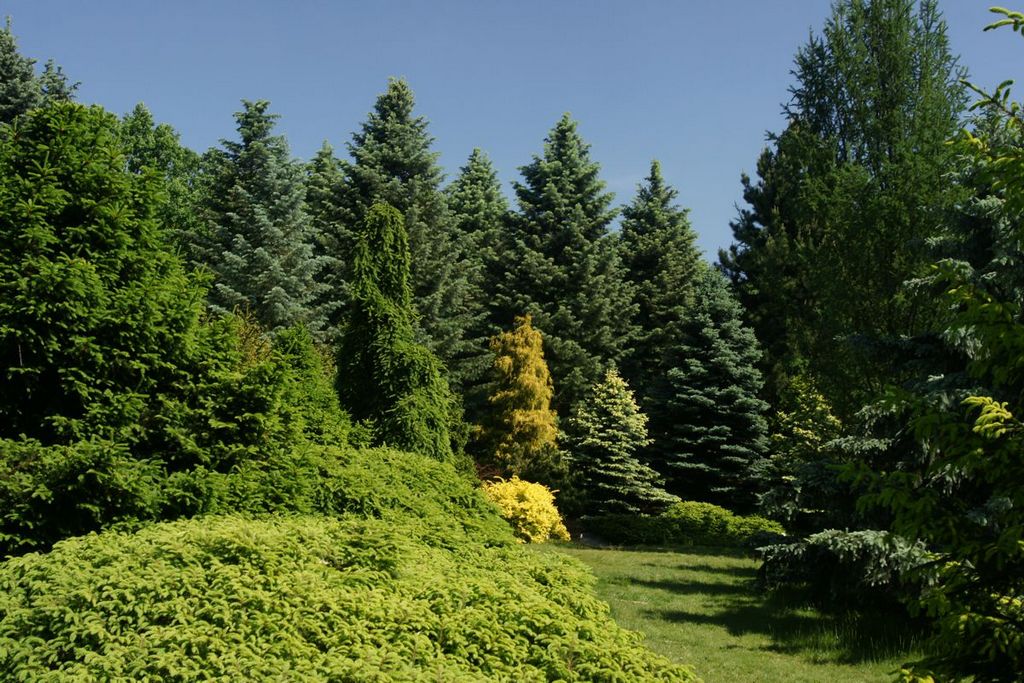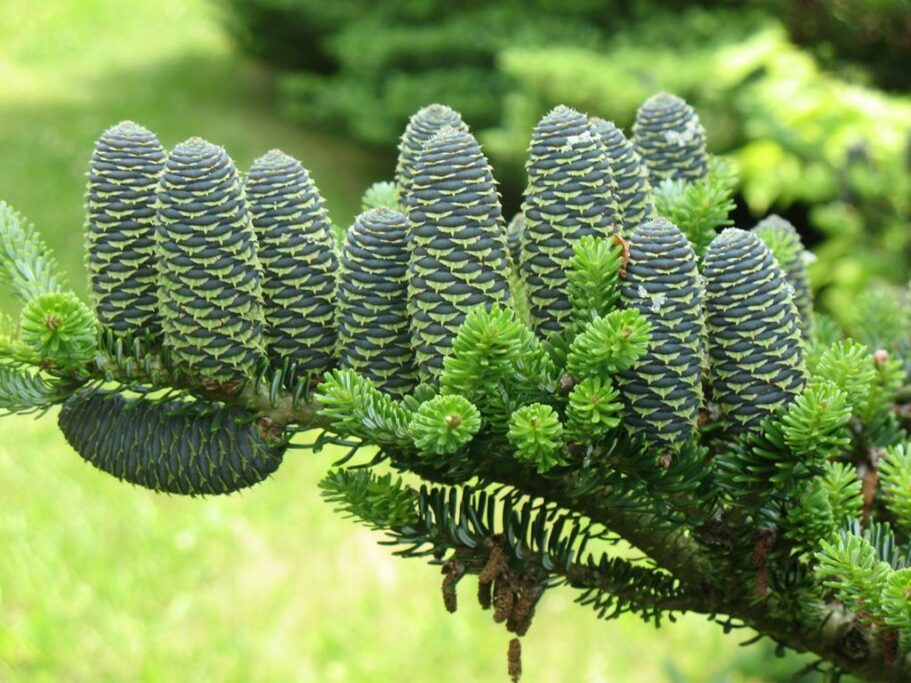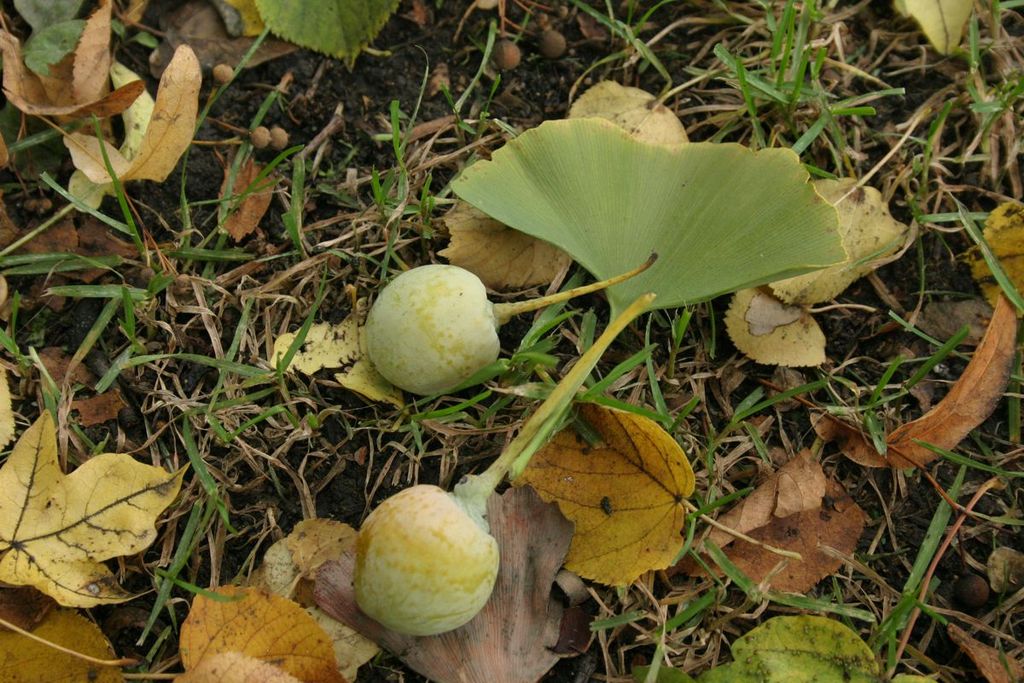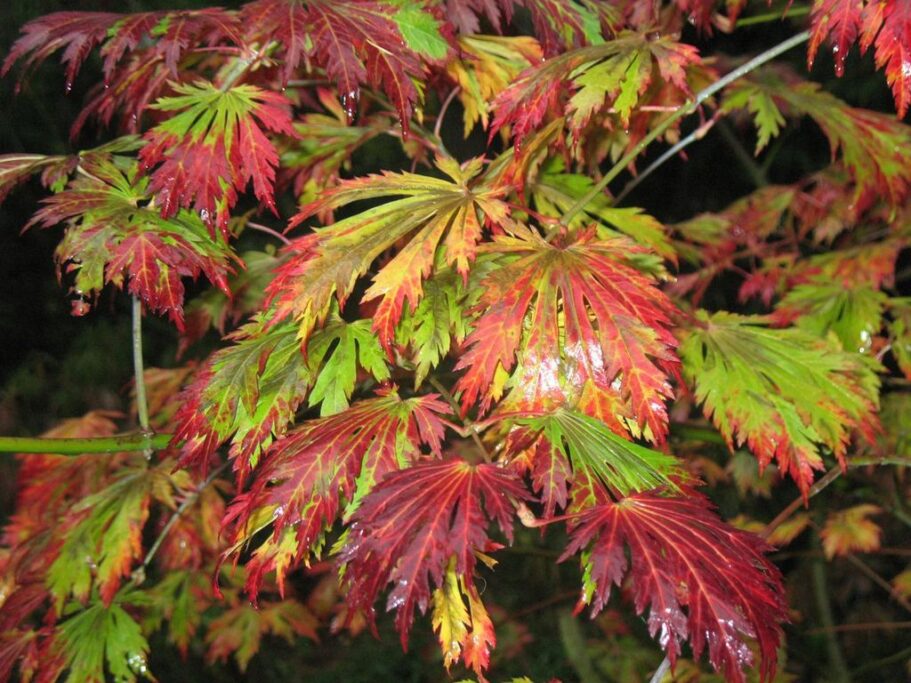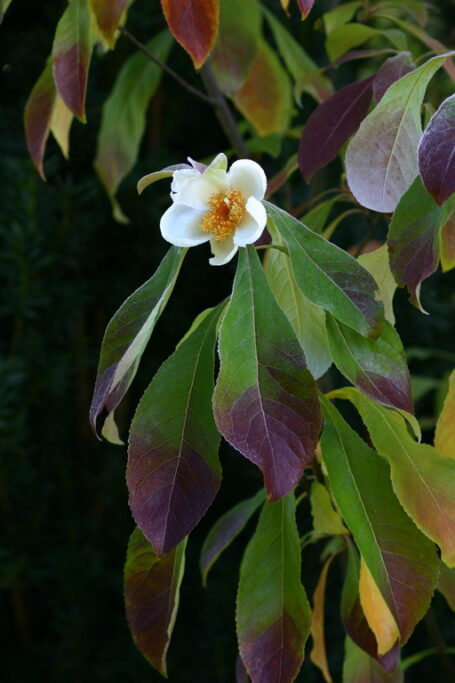- Supervisor: Agnieszka Kościelak, M.Sc.
- General data: number of taxa (species and varieties): 2557
- Area: 60 thousand m2
The beginning of the Arboretum can be considered 1979, when the first groups and rows of trees were planted according to the design of dendrologist Dr. Andrzej Marczewski.
Among the largest homogeneous collections are:
COLLECTION OF MAGNOLIA PLANTS (one of the largest in Poland), where 91 taxa have been collected, mainly from the genus magnolia (Magnolia) 78 taxa and from the genus tulip tree (Liriodendron) - 13 taxa.
The most collected varieties were Soulange's magnolia (Magnolia ´soulangeana) (Photo 1) - 16 varieties. This magnolia is a hybrid of the naked magnolia (Magnolia denudata) and purple magnolia (Magnolia liliiflora) obtained in 1820 by the French breeder, a retired cavalry officer Soulange-Bodin at the horticultural works in Fremont near Paris. There are about 50 of its varieties in the world with flowers that are large (10-15 cm long), white, pink or purple, usually developing in late April, before the development of leaves. The collection also grows very diverse flower colors - seedlings star magnolia (Magnolia stellata) (Photo 2), naturally occurring in the mountains of Japan on Honsiu. The fragrant flowers of this magnolia sometimes develop as early as late March or early April. American tulip tree (Liriodendron tulipifera) (Photo 3) Also belonging to the magnolia family (Magnoliaceae) grows in its native North America to a height of 60 m. It has original leaves: four lobes sharply topped, with a broad wedge-shaped indentation at the apex. The tulip-like flowers develop in June. Petals are yellowish green with an orange spot at the base.
IN THE COLLECTION OF CONIFEROUS PLANTS (Photo 4) collected 598 taxa (species and varieties) from among 29 genera. In the central part of the Arboretum, in a lawn-surrounded penny patch, grow coniferous species characterized by slow growth and dwarf habit. There are exposed species and varieties of junipers (Juniperus), yew trees (Taxus), vivars (Thuja), cypresses (Chamaecyparis), selected forms of dwarf pine (Pinus mugo) and spruce (Picea). White spruce 'Conica' (Picea glauca 'Conica') (Photo 5): A dwarf, very slow-growing spruce with a conical habit that was found in 1904 in the mountains near Laggan Lake, Canada. The oldest known specimens are 4 meters tall. The northern part of the Arboretum is home to coniferous species, such as mono-colored (California) fir (Abies concolor) naturally occurring in the southwestern regions of North America, where it grows in mountains up to 3,300 meters above sea level and grows up to 60 meters tall. Black pine (Pinus nigra) owes its name to its very dark, almost black bark. It occurs naturally in the mountains of southern Europe, Asia and northwestern Africa, where it grows mainly on calcareous, warm and dry soils. It grows up to 40 meters in height. It is a valuable pine for industrial regions - very resistant to air pollution. Serbian spruce (Picea omorika) known in its homeland of Serbia under the name ,,Omorica". It is a Tertiary relic and endemic with a very small range of occurrence: on the border between Serbia and Bosnia and Herzegovina. There it grows on the limestone mountains of Tara up to 1,700 meters above sea level. Korean fir (Abies koreana) (Photo 6) is one of the lowest fir trees (up to about 18 m in height), naturally occurring in the mountains of the southern part of the Korean Plateau. There it grows on volcanic soil, above 1,000 m. It sets a lot of small cones (4-7 cm long) already at 1 m height. The cones are purple or blue before maturing. Within the Garden there is a large group of Ginkgo biloba (Ginkgo biloba) (Photo 7), which is a relict and endemic species, extremely rare in the wild - in southeastern China. Preparations made from its leaves and fruits are of great medicinal importance.
The Garden also has a large population of Chinese metasequoia (Metasequoia glyptostroboides), a relict and endemic species growing naturally in hard-to-reach areas of central China at 700-1350 meters above sea level. In other woody plant collections, the following types of deciduous plants are most abundantly represented: maple (Acer) - 66 taxa, among others. Japanese maple 'Aconitifolium' (Acer japonicum 'Aconitifolium') (Photo 8), beech (Fagus) - 25, hydrangea (Hydrangea) - 47 and oak (Quercus) - 41.
A very interesting specimen is the shrub, endemic to North America american franklin (Franklinia alatamaha) (Photo 9), which was found in 1765 in its natural state in the United States, in the state of Georgia. After 1790 it is no longer found, preserved only in cultivation (including in botanical gardens, arboretums). It blooms white in September-October. On shrubs growing in sunny places, the leaves turn red in autumn.
In the western part of the Arboretum under the canopy of old pedunculate oaks grows Heptacodium miconioides, a tall deciduous shrub that was first found in 1909 in western China by American traveler and "plant hunter" - Ernest Wilson. It was introduced into cultivation only in 1980 by the Arnold Arboretum in the United States.
Photo authors:
Wieslaw Gawrys
Alina Kaczkowska
Agnieszka Kosciellak
Krzysztof Szkopek

